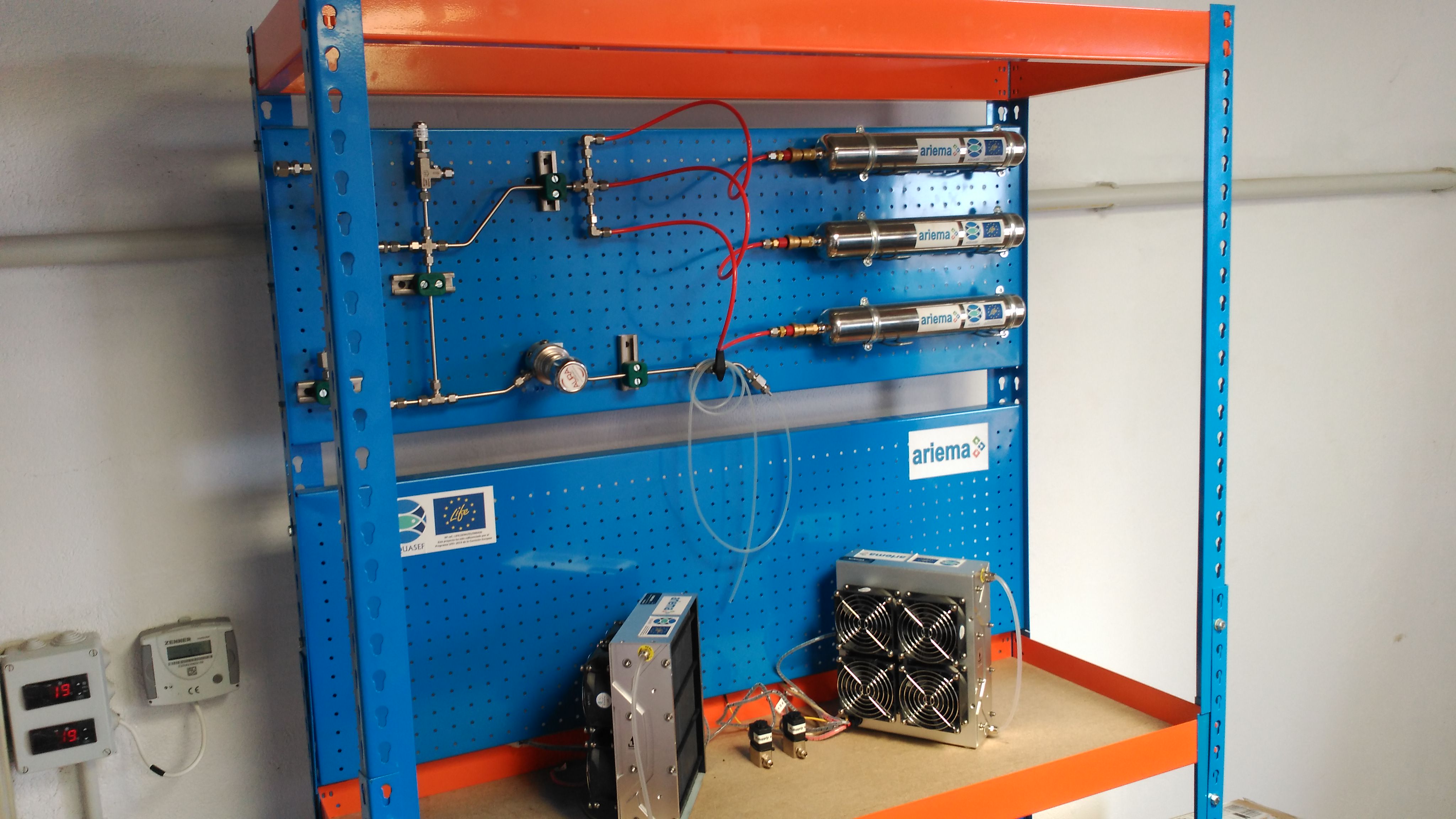Hydrogen Energy is tested for the first time in Spanish Aquaculture Sector
- Experts from LIFE AQUASEF project are working in economic and sustainable alternatives for the aquaculture sector and enabling producers to generate oxygen in situ by using 100% renewables energies.
- Energy savings due to this innovation reach out 30 percent of actual energy costs in aquaculture facilities.

Madrid, September 14th 2016 – The aquaculture sector is a promising market niche for hydrogen and fuel cells technologies – yet weakly developed in Spain – since beside fostering the sustainability of the activity for their easily connection to renewable sources, their unique output is water vapor with zero CO2 emissions.
“The added value of using this technology in the aquaculture field is that both generated gases can be used: oxygen for supplying the hatcheries, and hydrogen for producing electricity, heat and/or mechanical work”, explain expert David Solera, ARIEMA Energía y Medioambiente S.L. representative, company coordinator of project LIFE AQUASEF “Eco-efficient technologies development for environmental improvement of Aquaculture”.
This LIFE project aims to face two major challenges for the aquaculture sector: environmental and energy sustainability. Many of inland aquaculture facilities in Europe are located in areas without access to the grid, using energy derived from fossil fuels. In addition, these facilities become highly dependent to external oxygen supply as keeping a constant dissolved oxygen rate during the finfish production is a crucial fact in aquaculture. Installations based away from urban centers have difficulty in accessing to commercial oxygen and their supply costs are increased exponentially due to transportation difficulties.
To that end, LIFE AQUASEF has the objective to develop solutions to reduce both energy and oxygen dependence while preventing the impact through effluent treatment techniques and fixation of the CO2 released by a microalgae culture. “We have started the final phase for the site’s validation with an implementation rate up to 70%” has declared Maribel Rodriguez, R&D Director at ARIEMA Energy and Environment, S.L.
Among the activities included in this project, ARIEMA works at demonstrating the environmental advantages of gases generated through water electrolysis for onshore aquaculture installations by replacing traditional systems, based on fossil fuels, with others that can use renewable sources. This is a project that “integrate the energy world into aquaculture”, has indicated Rafael Luque Berruezo, CEO of ARIEMA.
Innovative application of electrolysis in this project

The process of water electrolysis involves the dissociation of the water molecule (H2O) into its two basic components (hydrogen and oxygen) by applying electric power. The reaction is composed of two half-reactions that take place in two electrodes: hydrogen will appear at the cathode and oxygen at the anode. Hydrogen and oxygen can be separated, purified and stored. Generally, electrolysis process is used to obtain hydrogen, a gas with high added value as energy carrier, off-venting the oxygen to the atmosphere. In this project, water electrolysis is focused on generating oxygen by reducing the need for oxygen external supply with its efficient auto production.
One of the most novel and innovative aspects addressed in this project addresses, lies in the fact that part of the energy consumed in the oxygen auto production could be recovered and stored as hydrogen energy testing different types of storage. It is expected to establish hydrogen based emergency back-up that is boosted by fuel cells, as uninterruptible power supply for critical power consumptions at the aquaculture facilities.
It should be noted that this project is coordinated by ARIEMA and a consortium composed of Inoma Renovables (previously known as Heliotrónica), D&BTech, Esteros de Canela and CTAQUA as project partners.
AQUASEF Project (LIFE 13ENV/ES/000420) is developed with the contribution of the LIFE financial instrument of the European Community under the call LIFE+2013 ‘Environment Policy and Governance’ with a total Budget of 1.899.318 euros (919.744 EC granted). Project completion and further results are scheduled for June 30, 2017.